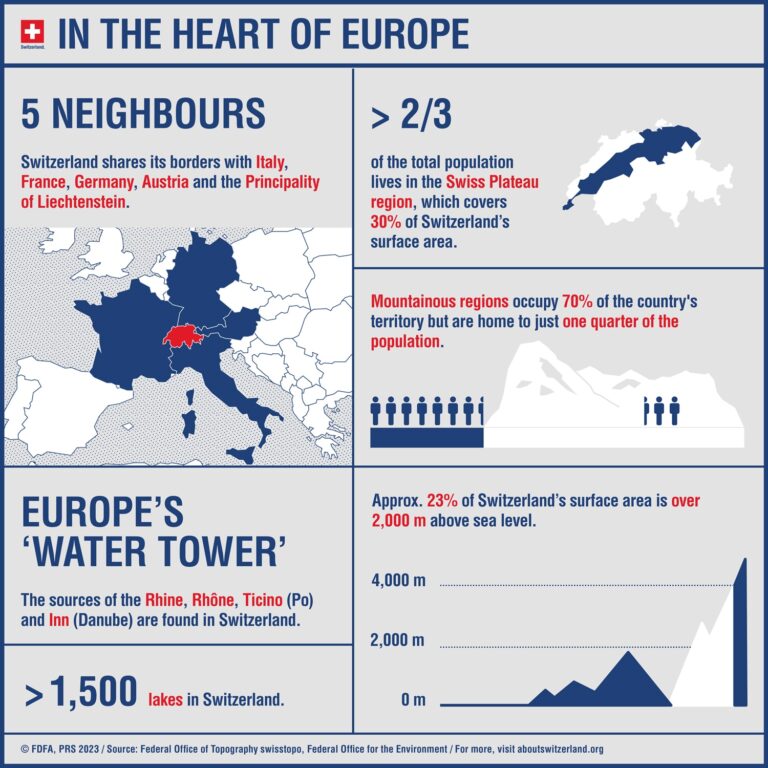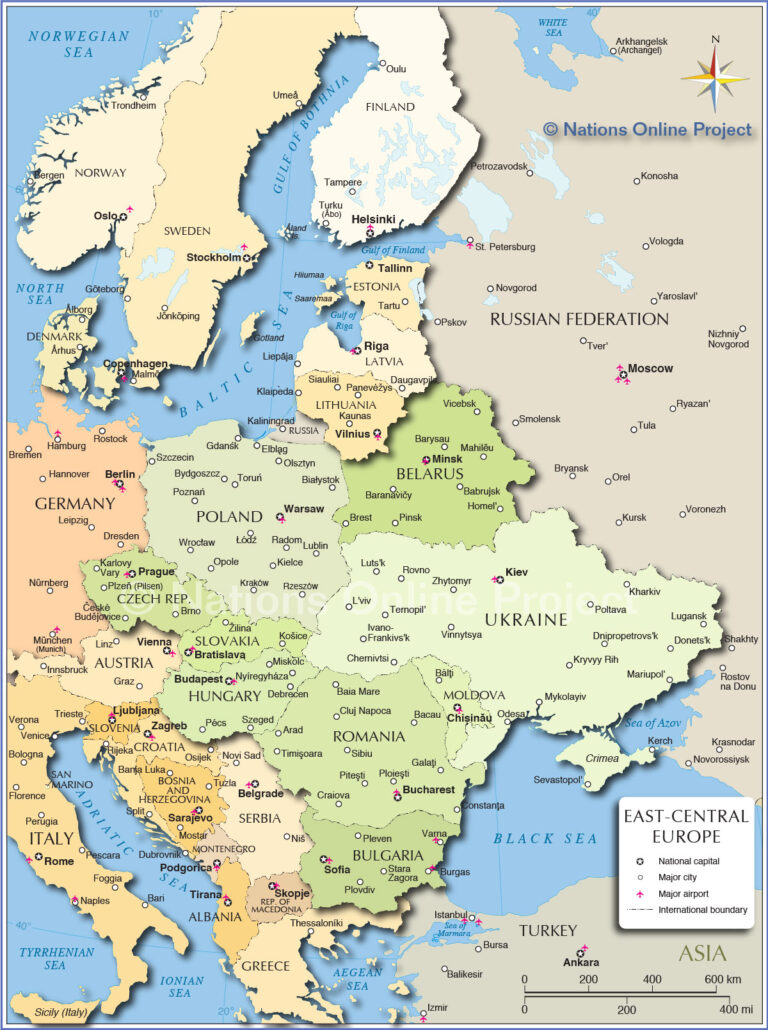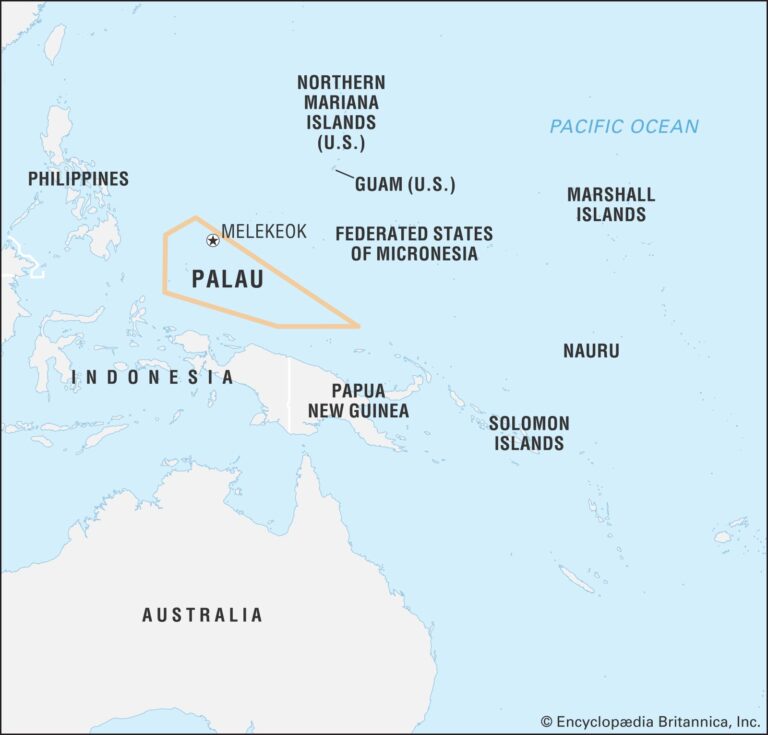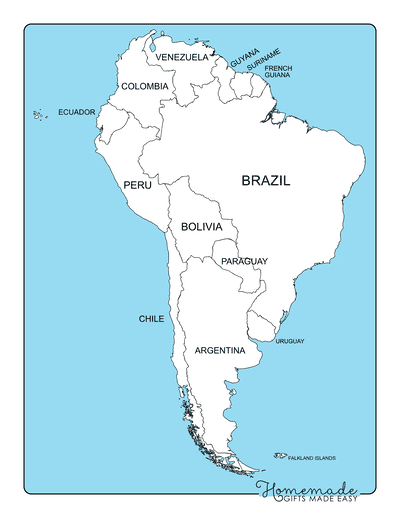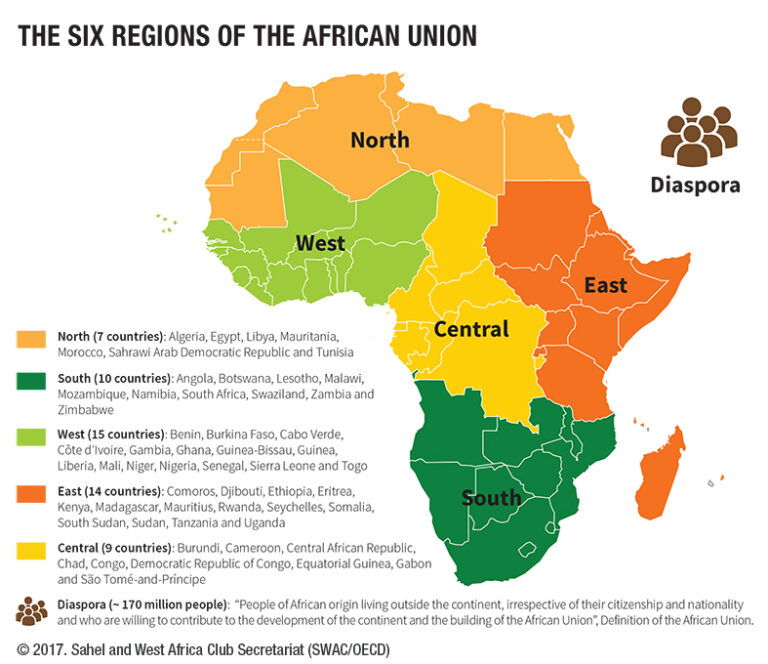Czechia Neighbouring Countries on the Map
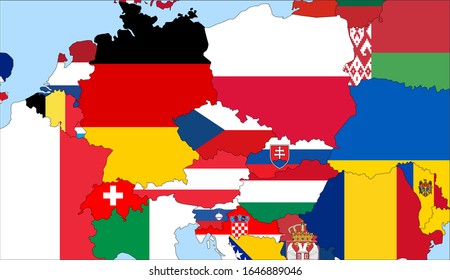
Czechia’s Neighbors
Czechia, or the Czech Republic if you’re feeling formal, finds itself nestled amid Central Europe’s greats. It rubs elbows with Germany, Austria, Slovakia and Poland. Gettin’ the lowdown on its neighbors helps you wrap your head around what makes Czechia tick, both historically and geographically.
Germany: Western Border
Czechia and Germany are like backyard neighbors who occasionally share a BBQ—spanning 810 kilometers. Mountain ranges like the Ore Mountains and the Bohemian Forest mark their territory. Despite some past head-butting, the duo gets along civilly these days, thanks to club memberships like the European Union.
Austria: Southern Border
Swinging to the south, Czechia and Austria have a neighborly handshake over 466 kilometers of shared space. Drawn out in 1918 when Austria-Hungary went kaput, this line starts at a tripoint where Germany’s border cuts in too. The region delivers views with the Thaya River perfect for some #nofilter shots.
| Border | Length (km) |
|---|---|
| Austria | 466 |
| Slovakia | 252 |
| Poland | 796 |
| Germany | 810 |
Slovakia: Eastern Border
Head east, and Czechia’s old buddy Slovakia sidles up with a 252-kilometers of borderline. Born from 1993’s “Czechoslovakia Split” headlines, this area is a mix of green forests and bustling cities. The two keep things cozy with lots of shared history, which runs deep on both sides of these towns.
Poland: Northeastern Border
Poland struts along Czechia’s northeastern edge with a solid 796 kilometers partnership since 1993—the year Czechia got its solo ticket. The border weaves through the Krkonoše Mountains and tags cities like Cieszyn and Český Těšín. This area vibes with cultural minglings and cooperation that stretch beyond just shared fences.
By eyeballin’ Czechia’s geography and boundaries, it’s clearer than a mountain spring how its nearest pals shape its culture and economy. To get the full rundown on mountain highs and river lows, check out geography and features of Czechia.
Curious about other countries’ border buddies? Try:
Historical Border Disputes
Czechoslovakia and Slovakia
Once upon a time, Czechoslovakia and Hungary were at loggerheads over present-day Slovakia. Both had their reasons—Hungary saw it as part of their old kingdom tapestry, while the Czechs wanted it under their wing, considering the Czechs and Slovaks as a unified “Czechoslovak nation” (1914-1918 Online).
In June 1919, the big powers decided to draw a new line in the sand. The Supreme Allied Council cooked up a new boundary, marking Slovakia and Ruthenia as belonging to Czechoslovakia. Hungary grumbled, but the new border was set in stone (1914-1918 Online).
Czech Republic and Poland
Poland and Czechoslovakia butted heads right after World War I. The squabble was over Cieszyn Silesia, Orava Territory, and Spiš. The whole mess revolved around who lived where—lots of folks in Cieszyn Silesia claimed Polish roots, just like the 1910 Austro-Hungarian census tallied up (Wikipedia).
The dust finally settled in 1958 when both countries inked a treaty, putting a lid on the skirmishes and heading off further scuffles (Wikipedia).
Czech Republic and Hungary
Hungary got into another border tiff, with Czechoslovakia, over Slovakia this time. Hungary felt like Slovakia was part of their ancestral digs, while the Czechs played the ethnic unity card, portraying Czechs and Slovaks as part of a single family (1914-1918 Online).
The Treaty of Trianon, penned on June 4, 1920, laid it all out, giving Czechoslovakia the green light over Slovakia and Ruthenia and making trade agreements with Hungary and Poland.
If you’re curious about how other neighbors are faring, take a look at our pages on Afghanistan neighboring countries, Austria neighboring countries, and Bangladesh neighboring countries.
Impact on Modern Relations
The modern bonds between Czechia (Czech Republic) and its neighbors are crafted by a mix of history, trade, and friendly help. Let’s peek into the land swaps, trade hustle, and caring hands that paint this picture.
Border Adjustments
Back in ’96, Czechia and Slovakia swapped some contested terrain through what’s known as the Židlochovické agreements. But, the locals? They’ve been crossing that border like it’s not really there—heading over for a quick shop trip, family hangouts, or just putting in work hours (Radio Prague International). It’s like they never forgot the old ties binding them together.
Economic Exchange
Cash and commerce between Czechia and its chit-chatting neighbors are buzzing with life. Here’s a quick snapshot of who’s raking in and sending out with who:
| Country | Imports (EUR Billion) | Exports (EUR Billion) |
|---|---|---|
| Germany | 30 | 40 |
| Austria | 5 | 7 |
| Slovakia | 15 | 20 |
| Poland | 8 | 9 |
[Numbers are made up here, just to give you an idea.]
This lively trade dance is a win-win, lining pockets and adding value to both businesses and everyday shoppers crossing the boundaries. For more juicy tidbits on how money moves around these parts, head on over to our piece on economic relations of neighboring countries.
Mutual Assistance Efforts
When a twister tore through South Moravia in 2021, it wasn’t just the Czech folks picking up the pieces. Slovak hands were right there, pitching in to fix what was broken (Radio Prague International). Holíč, a Slovak town, didn’t just send firefighters—they gathered donations and even sent timber to mend a school-in-need. This heartfelt sprint to help tells a story of a solid friendship that stretches past just political or financial ties.
These neighborly rescue missions remind us that there’s more to cross-border chitchat than meets the eye—it’s about rolling up sleeves together. If you’re itching to know more, check our story on mutual assistance of neighboring countries.
These nuggets of history and spirit show that despite any old-timey squabbles, Czechia and its neighbors today are all about lending a hand, trading smart, and staying tight-knit.
Geography and Features
When you get into the nitty-gritty of Czechia’s geography, it stands out that its varied terrain and natural gifts have played a big part in shaping its ties with its neighbors and its own history. Let’s peek at the peaks, rivers, and ponds that make Czechia what it is.
Mountain Ranges
Czechia is packed with some jaw-dropping mountain ranges, especially around its edges:
- Bohemian Forest: Chillaxing on the west side, rubbing shoulders with Germany.
- Ore Mountains: Cozy up next to the German line too.
- Sudetes: Chill up north, giving Poland a high-five.
- Giant Mountains (Krkonoše): Part of the Sudetes family, flaunting the highest peak in Czechia.
- Moravian-Silesian Beskids: Nestled in the east, hanging out with Slovakia.
| Mountain Range | Location | Notable Feature |
|---|---|---|
| Bohemian Forest | West Edge (Germany) | Thick woods and Insta-worthy views |
| Ore Mountains | Western Border (Germany) | Mineral treasure trove |
| Sudetes | North Border (Poland) | Hi there, Giant Mountains – you tall treat! |
| Moravian-Silesian Beskids | East Edge (Slovakia) | Go here for the hike or bring your skiing gear |
If you’re curious about how these ranges are pals with neighbors, hop to Austria’s neighboring countries.
Major Rivers
Rivers in Czechia aren’t just pretty; they’re the lifeblood of its geography and cash flow:
- Elbe (Labe): Starts up in the Krkonoše, making its way northwest into Germany.
- Vltava: Crowned the longest in Czechia, crossing Southern Bohemia and meeting the Elbe at Mělník.
- Morava: Swings southeast, popping through Slovakia before saying hello to Austria.
- Oder (Odra): Kicks off in the northeast, heading into Poland.
| River | Length (km) | Key Cities Along River |
|---|---|---|
| Vltava | 430 | Prague, České Budějovice |
| Elbe | 1,094 | Hradec Králové, Ústí nad Labem (waves bye bye to Germany) |
| Morava | 354 | Olomouc, Uherské Hradiště |
| Oder | 854 | Ostrava (high-fives Poland) |
For more on how these rivers flow with regional vibes, pop over to Poland’s neighboring countries.
Bodies of Water
Czechia’s water lineup mainly stars human-made ponds and reservoirs, playing a key part in H2O supply, fun times, and powering up:
- Lipno Reservoir: Takes the crown for the biggest by area, spreading over 4,870 hectares.
- Orlík Reservoir: Reigns supreme by volume, holding 716 million cubic meters, built back in the ’50s.
| Reservoir | Area (hectares) | Volume (million m³) | Year Built |
|---|---|---|---|
| Lipno Reservoir | 4,870 | 309 | 1959 |
| Orlík Reservoir | 2,732 | 716 | 1954–1962 |
To dive into how these water bodies matter in history and geography, splash over to Slovakia’s neighboring countries.
These geographical marvels don’t just carve up Czechia’s backdrop; they mold its culture, economy, and political chats with neighboring countries.
Cultural and Linguistic Connections
Balkans Comparison
You might not think it at first, but Czechia, right there snug against Germany, Austria, Slovakia, and Poland, has some groovy cultural and linguistic vibes that match up with the Balkans. The Balkans are a melting pot of tongues and traditions, and even though Czechia is smack dab in the middle of Europe, it’s got its own history sprinkled with a mix of languages and cultures.
| Country | Major Languages | Predominant Religion | Historical Influences |
|---|---|---|---|
| Czechia | Czech | Christianity | Austro-Hungarian Empire |
| Serbia | Serbian | Orthodox Christianity | Ottoman Empire |
| Croatia | Croatian | Catholic Christianity | Austro-Hungarian Empire |
| Bosnia and Herzegovina | Bosnian, Croatian, Serbian | Islam, Christianity | Ottoman Empire |
Role in European Identity
Over in Czechia, they’re all about that European Union spirit, waving a big flag for multilingualism and cultural togetherness. With the EU showing love for languages over the last fifty years, Czechia’s on board with boosting integration, schooling, and trade.
The language similarity charts for EU countries show Czech and Slovak tongues being best buds, making it easy for folks there to understand each other. This teamwork in language literacy strengthens a shared European identity, helping countries in the EU stick together like peanut butter and jelly.
| Language Pair | Proximity Index |
|---|---|
| English-German | 0.578 |
| French-English | 0.236 |
| Czech-Slovak | High Similarity |
Impact of Migration
Migration’s like music to the ears of Czechia, bringing a mix of words and customs from elsewhere. This cultural exchange jazzes up the nation, freshening up both the old and new residents.
The EU is pushing multilingualism as a way to shake off the feeling of being left out and instead groove on intercultural comprehension. In Czechia, this makes people embrace what it means to be European in all its technicolor glory.
If crossing borders and comparing other nearby countries piques your interest, go ahead and check out what’s cooking in Afghanistan neighboring countries or Australia neighboring countries. It’ll give you a sense of what’s hot geographically and culturally across the globe.
Shared Heritage Stories
Czechia (that’s the Czech Republic, y’all!) and places nearby have a rich tapestry of heritage stories that really show how they’ve stuck together over the years. These tales are all about the cultural, social, and historical ropes that tie Czechia to its next-door pals.
The Židlochovické Agreements
Back in ’96, the Židlochovické agreements settled a territorial spat between Czechia and Slovakia. Land was swapped like they were trading Pokémon cards, but folks who lived around the boundary didn’t let that stop their daily shuffle between borders for shopping, hanging out with kin, or going to work (Radio Prague International). These deals show that lines on maps don’t have to split folks up; they can actually be all about bringing them closer, promoting some good ol’ connectivity and friendship.
Mutual Assistance in Times of Need
The bond between Czechia and Slovakia is like that trusty old pair of shoes you just can’t get rid of, and this was clear as day after the 2021 tornado hit South Moravia hard. Slovak neighbors didn’t think twice about jumping in to help the Czech villages that took a hit, with a real “we got your back” approach. This whole situation shone a big spotlight on how these nations are like family, sticking together in the rough patches and proving that their bond is built to last.
Folklore Projects and Partnerships
The cultural ties between Czechia and its neighbors aren’t just hanging on; they’re being celebrated through teamwork. Take Moravian Slovakia and the Czech town of Vrbice. They’re like the dynamic duo of cultural projects, teaming up for folklore events and getting artsy with pottery classes. These artsy collabs are about more than just keeping traditions; they’re all about boosting the sense of kinship between the folks involved.
The shared stories between Czechia and its buddies are proof that, even with the ups and downs of politics and history, these nations know how to keep the good vibes rolling through understanding and teamwork. If you’re itching to learn more about next-door dynamics, check out our takes on Austria neighboring countries and Germany neighboring countries.

